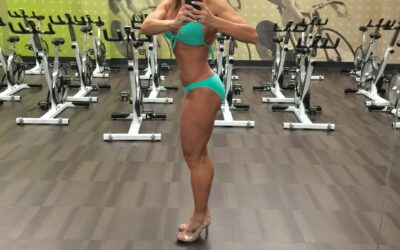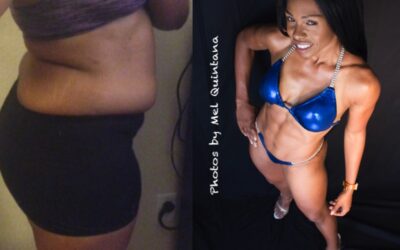Nutrition For Body Recomposition
In part one of our blog on Body Recomposition (or body recomp for short), we talked about a lot of the things to consider when with your training and lifestyle when attempting to recomp your body. We’ll get into some of the nutritional changes that you’ll need to help you with your body recomposition program. This may be the most important part, next to managing you sleep, but you’ll get much more bang for buck if you line both your training, and your nutrition properly. If you want to review part 1, you can check it out HERE.
As we get into nutrition and supplementation, you’ll have to understand the it’s best to match up your nutrition to you scenario. Let’s establish maintenance calories. IF you need to be accurate, one of the best ways is to use Katch-McArdle Equation Calculator. It uses your lean body mass to find out your calorie intake, so you’ll need a somewhat accurate, and honest way to get your body fat assessed. You’ll also need to be honest about the type and level of activity that you perform daily. IF you fall into the Skinny Fat category at the start of your program, or if you fall into one of the other categories with the exercise, start with maintenance calories. Especially if your body fat is a bit higher of the healthy range. Remember if your body fat is high and, you’re overweight going on a weight loss nutrition program until your body fat gets around 25% for a women, or below 17% for a man. Then get on a body recomp nutrition program.
There are two other ways to figure out your calorie intake. One is to track everything that you eat for 7 days, and check your weight before and afterwards. This is probably the most accurate way of finding out, but it’s also the most time consuming. The following way of figuring out calorie intake works well for most people that workout:
- 10 calories/lb. of bodyweight to lose weight (unless you’re morbidly obese)
- 12 calories/lb. for maintenance calories (or muscle gain with fat loss)
- 15 calories/lb. of bodyweight to gain muscle
Now this would only be a starting point, and you’ll still want to monitor things in the beginning to make sure that no adjustments to your calorie intake are needed.
Protein Intake
Next to your calorie intake, your protein intake plays the largest role in your nutrition program for your body recomposition transformation. It’s also one of the most common mistakes that beginners make that keep them from getting the results that they want. Yes calories in vs. calories out plays a major role in your ability to transform your body. But it isn’t the ONLY thing that matters. When they perform studies on nutrition, and more specifically, protein intake, they will usually set the calorie intakes equal. This makes it so that the protein intake is the only variable being watched. Here’s what some important highlights of the studies of the effects of protein intake on body recomposition:
- When combined with a resistance-training program and a hypoenergetic (calorie deficit for weight loss) diet, an elevated daily intake of protein (2 – 3× the RDA) can promote greater losses of fat mass and greater overall improvements in body composition. The RDA’s are .8 grams/kg or .36 grams/lb. When you double this amount of protein, you get better results. You lose more fat even at the same calorie intake.
- In another study where people were put on either a 1.2 g/kg or protein per day (.55 g/lb.) vs 2.4 g/kg of protein per day (1.1 grams/lb.) on a hypoenergentic diet, combined with high volume resistance exercise, and HIIT workouts. The high protein group lost more fat, but they also gained more lean body mass.
- In another study using female physique athletes (not just bodybuilders, figure competitors, bikini… or anyone trying to get lean while gaining muscle) they compared a group with an intake of 2.5g/kg per day vs. .9g/kg per day. Once again the higher protein group lost more body fat, and gained more muscle.
The point of this isn’t to have you jack your protein intake through the roof. The point is to recognize that even though calories play a major role, your protein intake also plays a strong role in your ability achieve the results that you’re looking for with your body recomposition. It’s also one of the most common mistakes that people make with their nutrition program.
Carb Control
The next important thing to tackle is the quality or nutrient density of the foods that you eat along with the timing of those type of foods can also be helpful. This is using how your body becomes more sensitive during and after a workout, and is less sensitive further away from your workout. Think of it this way, during and up to about 1-2 hours after your workout your body is better at getting those carbs where they need to be so that the body can use them to either fuel your workouts, or replenish glycogen so that your muscles can use it during your next workout. Around this time you can have carbs with a faster breakdown. Outside of this time period, you’ll want to have carbs that have a slower breakdown into sugar. These carbs will also have tend to be higher in nutrients (like fiber, or potassium), relative to the amount of calories that they have (nutrient dense). So that along with the proteins and fats contained in the meal, they will allow you to maintain steady blood sugar levels. This is what you want for recomposition. You’ll be less likely to overeat because you’ll feel fuller longer, and you’ll have less issues with cortisol and blood sugar levels because there will be less spikes and drops in blood sugar. This is an example of a day for a woman weighing 140 lbs:
| Breakfast | 2 Eggs, Black Beans (3oz), 1 cup Spinach, 2 oz. Ground Turkey, |
| Meal 2 | 1 Scoop of Protein Drink, 7.5oz. Apples, 2 Tbsp. All Natural Peanut Butter |
| Lunch | 4 oz. Chicken Breast, 6 oz. Sweet Potato, 1 Cup Green Beans, |
| Postworkout | 1 scoop of Protein, 6 oz. Banana, |
| Dinner | 4 oz. Ground Beef (90%+ lean), ½ cup Rice (cooked), 6 oz. Asparagus (eat a lot) it doesn’t matter that much. I’d the amount of fibrous veggies to be as high as possible. |
She works out in the evenings, and if you notice she has only low glycemic index carbs but also eats most of her fats at the meals further away from her workouts. At postworkout, and the meal after the postworkout, she has meals lower in fat, but has also has starchy or high glycemic index carbs. so that they will allow for her body to quickly replenish her glycogen to help her recover from, as well as help her get ready for her next workout. Which is also why there’s a protein drink postworkout, instead of a solid food protein source. The protein drink gets through the digestion process faster so that the nutrients become available to help the body recover.
Nutrient Timing & Postworkout Nutrition
Carb & Calorie Cycling
Another strategy that may be useful for body recomposition is carb cycling. In a perfect world, you’d have your calorie intake matched up with the amount of activity that you’re
performing and you’d also be able to match your carb intake to the level of work you’d be performing on that day. This would make carb and/or cycling a great strategy. Here’s why. Calorie cycling is when you cycle different calorie intakes. It can be based on the body parts that you’re working, how much volume you perform during that workout, or whether or not you even have a workout that day. Carb cycling is similar but you’re just cycling the amount of carbs that your taking in that day. The thought behind this is that you can have higher carb days for the days that you workout, so that the carbs can fuel the exercise, or the recover and less carbs for days off, lower volume, smaller body part workouts… when you don’t need them. An example of both of these concepts would be someone who’s a woman at 150 lbs. with 27% body fat, or maybe a man at 190 lbs. with 17% body fat, body fat. A simple version of this would use the earlier numbers for calorie intake of:
- 10 calories/lb. of bodyweight to lose weight (unless you’re morbidly obese)
- 12 calories/lb. for maintenance calories (or muscle gain with fat loss)
- 15 calories/lb. of bodyweight to gain muscle
On workout days, we’ll use 15 calories/lb. and on non-workout days we’ll use 10 calories/lb. We’ll have more calories to use for the days that we need them. And less calories on the days that we don’t. And the same goes for the carb intake.
| Days | Male 190 lbs. | Female 150 lbs. | ||
| Monday | Back & Tri’s | 2850 cal | Back & Hams | 1800 cal |
| Tuesday | Legs | 2850 cal | Chest & Bi’s | 1800 Cal |
| Wednesday | Chest & Bi’s | 2850 cal | Off | 1500 cal |
| Thursday | Off | 1900 cal | Shoulder & Tri’s | 1500 cal |
| Friday | Shoulder & Calves | 1900 cal | Quads & Calves | 1800 cal |
| Saturday | Back & Tri | 2850 cal | Off | 1500 cal |
| Sunday | Off | 1900 cal | Back & Hams | 1800 cal |
So the macros would be next on my list. I wouldn’t have them being the same on both days because on the off days, or smaller body part days you would have less calories, and less of a need for carbs to fuel the workout. So it could be:
40% Carb, 35% Protein, and 25% Fat on Workout/High Calorie Days
40% Fat, 35% Protein, and 25% Carb on the Off/Low Calorie Day
So the macros for both would look like:
| Days | Male 190 lbs. | Female 150 lbs. | ||
| Workout Day | 285g Carb250g Protein80 g Fat | 2850 cal | 180g Carb158g Protein50g Fat | 1800 cal |
| Off Day | 119g Carb167g Protein85 g Fat | 1900 cal | 94g Carb131g Protein67g Fat | 1500 Cal |
Summary
I’ve laid out a lot of strategies, as well as the train of thought involved in helping someone successfully complete a body recomposition transformation. This is by no means a complete guide because everyone wanting a body recomp transformation comes from a different starting point. I’ll recap the strategies mentioned, and recommend who these strategies might be best for. In most cases, changes to your workouts may also be needed.
- Body recomposition, or Body recomp for short is when you try to transform your body by gaining muscle and losing fat at the same time.
- For body recomp transformations, the devil’s in the details. It’s not just about the typical calories in vs calories out strategy. It’s also about your history up until this point.
- Body Recomp as the main strategy isn’t for everyone. But I do believe most people can include a phase or two where this becomes the goal. If you’re someone that has large amounts of weight to lose, MOST of your training and nutrition phases should target weight loss. The same is also true for someone that wants to gain a lot of muscle, but already has low body fat.
- Examples of people who are good candidates for body recomposition:
1. Skinny Fat People
2. People who have been dieting on really low calories, but still aren’t lean
3. Inexperienced Lifters
4. Break From Normal Training
- Unlike when you try weight loss or muscle building programs, the scale can’t be the main way to measure success. You’re attempting to both lose fat and gain muscle. If you ONLY use the scale, you could be successful, and not know it, because your weight might not change, even though your body fat does.
1. Circumference Measurements
2. Body Fat
3. Pictures
- Try to increase the Quantity and/or quality of your sleep. Your testosterone, stress hormones, your ability to properly use carbohydrates, and your perception of pain are all compromised when you don’t get enough quality sleep.
- Get your calories right. Nutrition is should be used to fuel high quality workouts, and but also allow you to recover for them. Carb/calorie cycling is a great strategy for body recomp.
- Protein intake will make or break you. Once you get your calories right. Get your protein intake right. In most cases you’ll need to start at 1 gram of protein/lb. of body weight (2.2g/kg). Research has shown that higher intakes may be beneficial.
- Incorporate more Omega-3 fats into your diet. If you want to improve your health, as well as your ability to build muscle while burning fat. You’ll want to reduce (REDUCE, not eliminate) the amount of saturated fats in your nutrition program. This is itself can be a long explanation so I’ll talk about fish oil and other supplements in part 3.
- Nutrient & Meal Timing are helpful for body recomp. Use the science to work for you, not against you.
- Carb and Calorie Cycling may also be a helpful strategy with your body recomp.
If you need some help incorporating some of these strategies with your own body recomposition transformation we offer personalized workout and nutrition programs. If you’re in the Oklahoma City Area we also offer 1 on 1 personal training to help you with your weight loss, muscle building, or body recomposition goals. Feel free to contact us for more info at info@bodynovafitnesscoaching.com




0 Comments